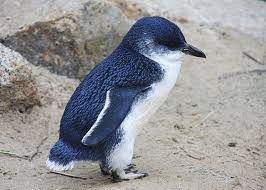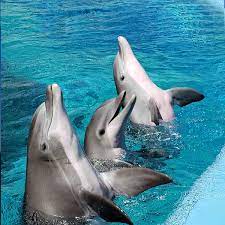Everything posted by -𝓢𝓗𝓔𝓔𝓚𝓞
-
Little blue penguins — a flightless bird native to New Zealand and the world’s smallest penguin species — have been washing up dead on the country’s beaches, in what experts say are more frequent mass die-offs amid changing climate patterns. Hundreds of lifeless birds have been found in northern New Zealand since early May, though the exact number is difficult to determine and reports are still coming in, said Graeme Taylor, principal science adviser at the New Zealand Department of Conservation. The penguins, also known as korora, were tested for diseases and biotoxins, but appeared to have died from starvation, Taylor said. “All the birds were at least half the normal weight, they had no fat on them at all and their muscle tissue had wasted away.” It is not unusual for seabirds to die off in large numbers because of severe weather, conservationists say. But mass deaths among little blue penguins, which used to take place about once a decade, have now happened three times in six years, Taylor said. Experts in New Zealand, where the little blue penguin is considered “at risk,” expected a mortality event this summer due to La Niña, a climate pattern that affects weather around the world and typically occurs every three to five years. The ongoing event is favored to continue through the end of the year, according to forecasters at the National Oceanic and Atmospheric Administration. This puts it on track to be the third consecutive fall and winter season with La Niña conditions, a rare occurrence. La Niña has combined with a marine heat wave to create a “double whammy” for the penguins, raising sea temperatures which in turn makes it more difficult for them to find the small fish they feed on, Taylor said. The fish may have moved south or descended to colder waters below the penguins’ diving range. Get the Morning Rundown Get a head start on the morning's top stories. “Particularly young birds are really struggling to find good places to find food, and even experienced adults look like they’ve been caught up in this,” he said. With mass die-offs happening more frequently, Taylor added, the penguins have less opportunity to replenish their po[CENSORED]tion through breeding in better years. Though it’s not possible to measure the exact impact of climate change on the species, there are observable patterns, said John Cockrem, a penguin biologist in the School of Veterinary Science at Massey University in New Zealand. Little blue penguins at the southern end of New Zealand, which has not been subject to the same sea temperature changes, appear to be doing better than po[CENSORED]tions in the north. “It’s very likely that it’s more than a coincidence that this is happening when there are warmer sea temperatures,” Cockrem said. More die-offs can be expected with more frequent occurrences of warmer sea temperatures around the New Zealand coast, he said, adding that the number of little blue penguins in the north “may well decline as a consequence of climate change.” The bird could be considered the “canary in the coal mine” of the sea, Cockrem warned.
-
A new study claims that two influences best explain the differences among whistles: the local ocean environment and the demographics of different dolphin po[CENSORED]tions. Bottlenose Dolphins.Stuart Westmorland / Getty Images Young dolphins, within the first few months of life, display their creativity by creating a unique sound. These bleats, chirps and squeaks amount to a novel possession in the animal kingdom — a label that conveys an identity, comparable to a human name. These labels are called signature whistles, and they play an essential role in creating and keeping relationships among dolphins. While the development of a signature whistle is influenced by learning from other dolphins, each whistle still varies in volume, frequency, pitch and length. Scientists have studied signature whistles for over 50 years and have made significant gains in understanding how whistles are used and why. But what is less understood are the exact factors that influence these varying styles used to broadcast a singular creature’s existence. A study published Thursday on dolphins in the Mediterranean Sea now claims that two influences best explain the differences among signature whistles: the local ocean environment and the demographics of different dolphin po[CENSORED]tions. For example, the scientists found dolphins who live in regions with more seagrass have signature whistles that are higher in pitch and shorter in length when compared to those who live in areas where the seafloor is muddier. Meanwhile, dolphins in smaller groups had whistles that changed pitch more often than dolphins in larger groups. Dolphins come out to play as traffic eases on Istanbul’s Bosphorus Strait The results, published in the journal Scientific Reports, support the idea that dolphins create signature whistles that best fit their local habitat. “A signature whistle is often said to be similar to a name because it is individually distinct and serves to identify the animal,” said Brittany Jones, a postdoctoral research fellow at the National Marine Mammal Foundation who was not a part of this study. The main difference, Jones said, is that the owner of the signature whistle uses it more often than other dolphins, whereas other people use our names more than we do. She also compares signature whistles to our distinctive voice, which can convey information about identity, proximity and emotional states. In 2013, researchers discovered that dolphins imitate another’s signature whistle to re-establish contact, at times adding parts of their signature whistle to the call. Meanwhile, in 2018 a study on male bottlenose dolphins found that they retain their “names” into adulthood just like females — it was previously thought males abandoned their signature whistle to adopt the same whistle as their alliance groups. In turn, scientists believe dolphins — like people and probably elephants — are capable of long-term social recognition. Dolphins can remember other dolphins after 20 or more years without contact by remembering their whistles, said Jason Bruck, an assistant professor at Stephen F. Austin State University. Get the Morning Rundown Get a head start on the morning's top stories. Bruck was not a part of the research but is the first author of a recent study published in Science Advances that found bottlenose dolphins identify their acquaintances through signature whistles — and the unique taste of each other’s urine. “At this point, we can say with some confidence that dolphins have at least two modes of social identification between signature whistles and urine cues,” Bruck said. “Dolphins are excellent whistle mimics if they want to be, so urine might be more resistant to cetacean identity theft, though deception in signature whistles remains understudied.” To study the dolphins examined in the new paper, scientists analyzed 188 hours of recorded acoustic data collected by different research groups from 2006 to 2020. These sounds were recorded at six sites across the Mediterranean Sea, which is divided into west and east basins. Because there is genetic variation between eastern and western dolphin po[CENSORED]tions, the study team was curious to see if genetics influenced signature whistles. Accordingly, the eastern and western basins were used as proxies for genetic variation. The team extracted 168 individual whistles from the recordings and analyzed their acoustic features in relation to a few factors: precise location where the whistle was recorded, whether or not this was in the eastern or western basin, the local ocean environment and po[CENSORED]tion demographics. Ultimately, the scientists found that location only partially affected whistle variability, and the genetic differences between the dolphins had “no strong influence on the acoustic structure of their signature whistle.” Meanwhile, the environmental conditions and demographic characteristics did appear to strongly influence signature whistles — findings that align with the “acoustic adaptation hypothesis,” the idea that animals acoustically adapt their vocalizations to their local conditions to optimize the purpose of their sounds. The study claims these are the foundational influences on signature whistle variability — and from here, dolphins influence one another and innovate their own specific sounds. However, “there may be aspects of these calls that the dolphins are paying attention to that we weren’t aware of,” Bruck said. It’s possible that anatomical differences between dolphins could explain why signature whistle styles vary, and genetics ultimately would explain those differences. For now, we don’t know. Examining captive dolphins allows scientists to create situations where a more complete study design is possible, he acknowledges — but that it’is much harder in the wild. Overall, we know much more about dolphin communication systems observed in captivity than in the wild, and there’s a need for further study. It is known that in captivity signature whistles happen most often when a dolphin is isolated from its group. In the wild, signature whistles make up 38 percent to 70 percent of all of a dolphin’s whistle repertoire. So far, studies of signature whistles have helped us better understand how dolphins reunite in murky waters, remember each other, communicate and bond, among other abilities, Jones said. Next, she’s interested in answering whether “we can predict changes in health status from signature whistle recordings.”
-
- 1
-

-
Voted.
-
A big PRO from me🙂 Active , He never broke 1 rule , Good luck!
-
This post cannot be displayed because it is in a password protected forum. Enter Password
-
(1).thumb.jpg.0fccae7c1a14984aff733d6ea22a2bff.jpg)
usefull bind method for admins
-𝓢𝓗𝓔𝓔𝓚𝓞 replied to Makan's topic in ~● Technical Support and Suggestions ●~
Its really useful binds , Thanks -
930
-
2372
-
And because he bought bananas he ate it
-
-
Active player + he respect rules .. PRO!
-
¤ Your Nickname (same as in forum): Sheeko ¤ Your Address Skype, facebook: https://www.facebook.com/medhat.mohammed.5203 ¤ Age:18 ¤ Languages That You Can Speak: English - Arabic ¤ Your Location: Egypt ¤ Experience As Admin (last server GT link): 4 Years as admin ... (highlifezm-zmnewworld -zmoldschool -zmpgl.zone - bestzm) ¤ Can You Stay Spectator Or Playing Between These Hours (24:00 To 12:00 PM): yes ¤ Link Of Hours You Played On Server ( CLICK HERE You Must Write Your Nickname)https://www.gametracker.com/player/sheeko/NEWLIFEZM.CSBLACKDEVIL.COM:27015/ (i know its not the best activity .. but its the first 2 weeks in the server , so i wasn't AFK .. i'll improve it ) ¤ Reason That You Want To Be Admin: Helping server ¤ Password/key for admin[ Read The Rules to find it] :NewLifeZM2025




 -AndreeA
-AndreeA